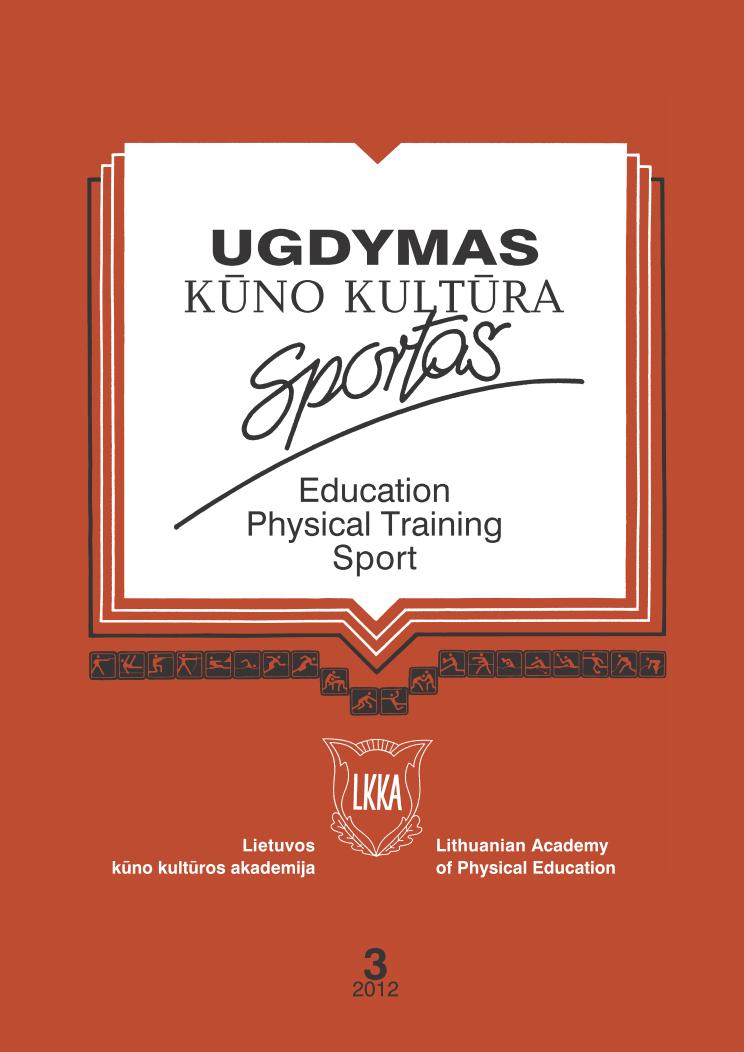Assessment of Physical Working Capacity of Differently Trained and Aged Female Aerobic Gymnasts
Abstract
Research background and hypothesis. Physical working capacity by PWC 170 test allows estimating physical
preparation of athletes’ bodies, but these indices may not be directly linked to their sports achievements.
Research aim. The aim of this study was to identify and assess physical working capacity characteristics of
differently trained and aged female athletes.
Research methods. The study included 40 subjects: young athletes (juniors) (12–14-years-old girls) and
students of Lithuanian Academy of Physical Education – studying in aerobic gymnastics specialization. According
to performance (training) level they were divided into the following groups: juniors (n = 10), beginners (n = 10),
moderately trained (n = 10) and well-trained (n = 10) representatives of aerobic gymnastics. The testing included
anthropometric measurements, heart rate (HR) measurements (HR values were recorded using heart rate measuring
device “Sigma PC-15”, Germany), and PWC 170 tests. Athletes carried out two loads of physical activity at different
intensities with a duration of 3 and 5 minutes (the rate of stepping (30 times per minute) was regulated according to
the tempo of music that was specially prepared in the recording studio).
Research results. We found that the differences in physical working capacity between well trained gymnasts
and the beginners were not statistically significant. We established similar values of PWC 170 in moderately trained
and junior groups; statistically significant difference (p < 0.05) was established only comparing the latter two groups
with well-trained athletes.
Discusion and conclussions. The results showed that physical working capacity of well trained aerobic gymnastics
athletes (participating in international competitions, world and European Championships) had not reached very high
training level, but they were assessed as adequately trained. Physical working capacity of beginners was satisfactory
and the indices of moderately trained (with twice more training and competition experience) and junior athletes
were very low.
Keywords: aerobic gymnastics, physical working capacity, PWC170, heart rate.
Downloads
Published
Issue
Section
License
Copyright (c) 2018 Baltic Journal of Sport and Health Sciences

This work is licensed under a Creative Commons Attribution 4.0 International License.






